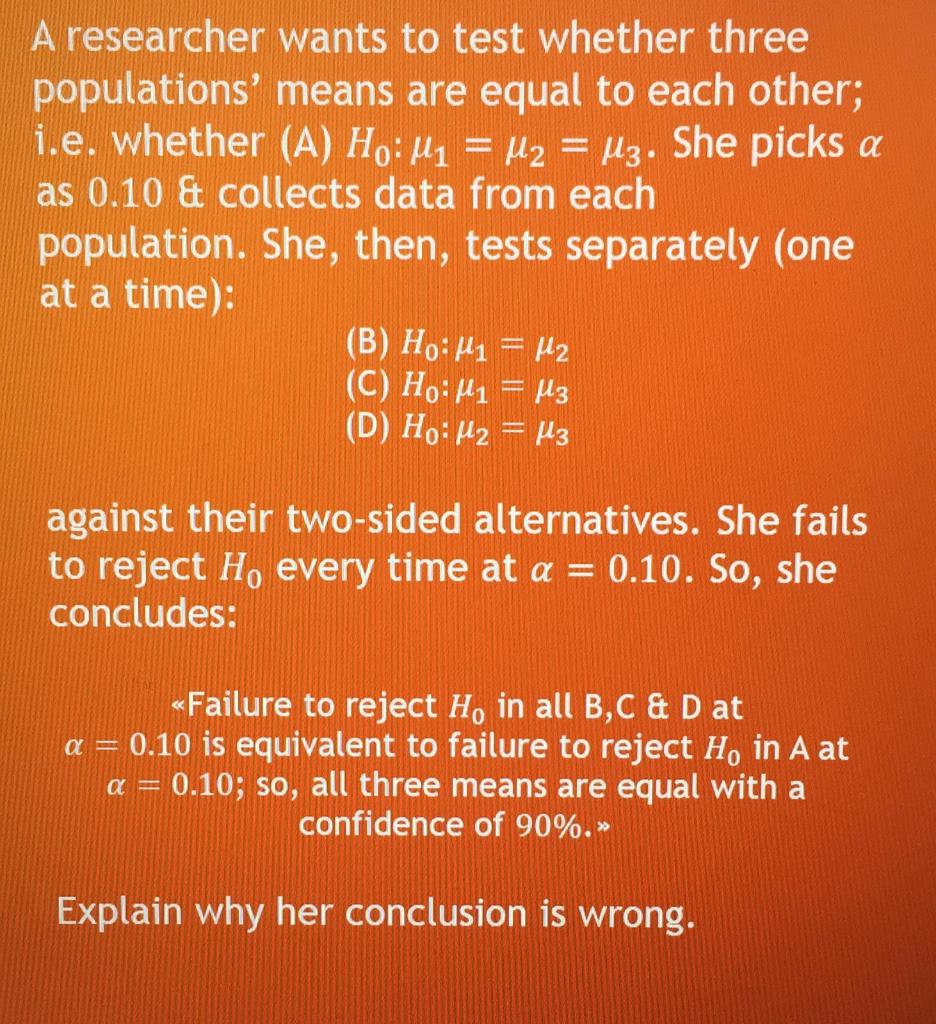
A researcher wants to test whether three populations' means are equal to each other; i.e. whether (A) HO:My = U2 = Uz. She picks a as 0.10 & collects data from each population. She, then, tests separately (one at a time): (B) Ho: Mi = H2 (C) Ho: M1 = M3 (D) Ho: M2 = M3 against their two-sided alternatives. She fails to reject H, every time at a = 0.10. So, she concludes: a = «Failure to reject H, in all B,C & D at = 0.10 is equivalent to failure to reject H, in A at a = 0.10; so, all three means are equal with a confidence of 90%.» Explain why her conclusion is wrong.
没有找到相关结果